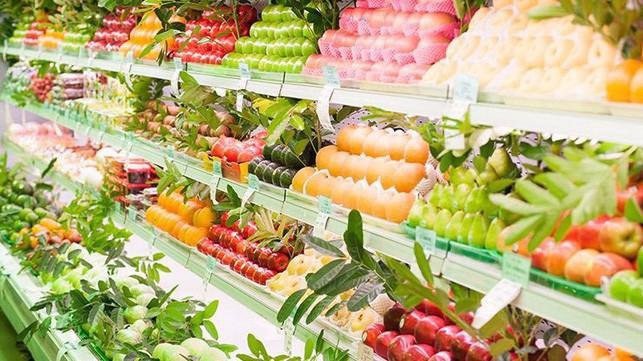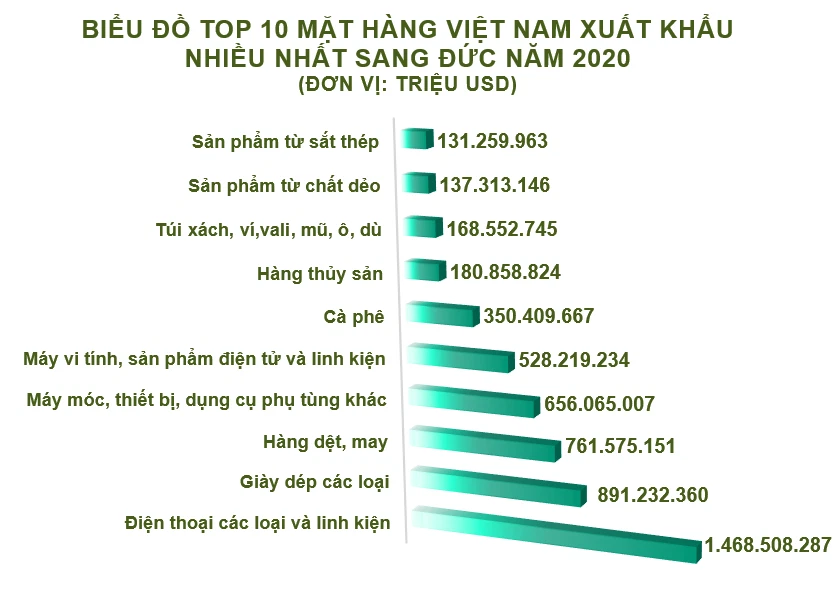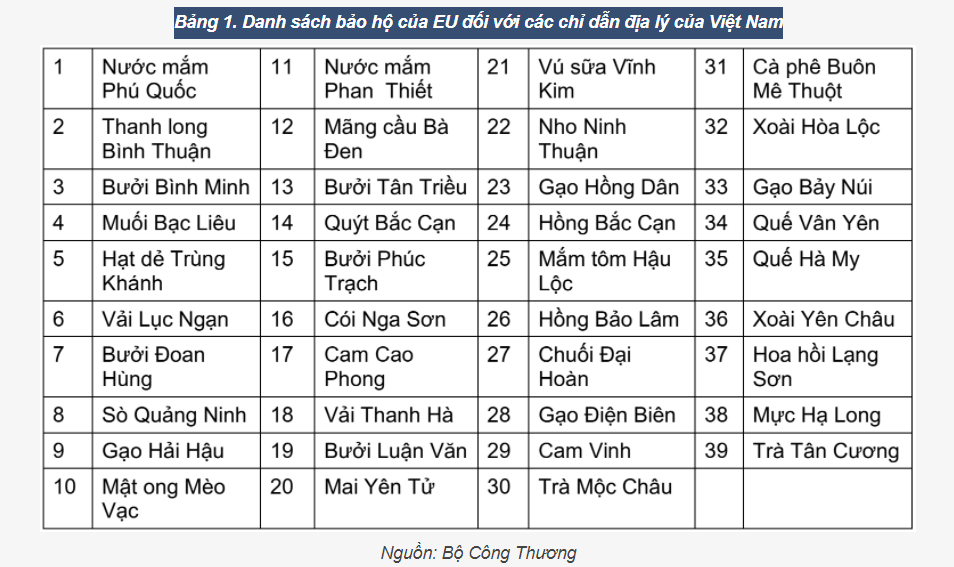HIGHLIGHTS
- Vietnam excels at manufacturing light industrial products, consumer goods, agricultural products, and food.
- Vietnam has a strong import demand for heavy industry products from Germany, such as raw materials and machinery and equipment.
- Many significant Vietnamese exports to the German market have increased dramatically, including machinery and equipment (up 83.6 percent), transportation and spare parts (up 71.6 percent), iron and steel (up 53.2 percent), computers and electronics (up 34 percent), and seafood (up 15.5 percent ).
FULL ARTICLE
Germany is a prospective export market for Vietnam
According Mr. Hoang Quang Phong, Vice President of VCCI, Germany has always been one of Vietnam’s important trade partners. This is the second largest export market in the EU and the seventh in the world for Vietnam’s exports by 2020. Furthermore, in terms of imports, Germany is our country’s second largest source of goods in the EU and fourteenth in the world.
Based on the structure of goods sources and environmental characteristics, it can be seen that Vietnam has strengths in the production of light industrial products, consumer goods, and agricultural and food products. Meanwhile, Germany is a country that frequently imports these commodities.

On the other hand, Vietnam has high import demand for heavy industry products from Germany such as raw materials and machinery and equipment. These products have a product structure that complements each other without competing, which is an essential element to maintain in trade relations.
According to the positive sharing of Ms. Nguyen Cam Trang, Deputy Director of the Import-Export Department at the Ministry of Industry and Trade, in the first year of implementing EVFTA, Vietnam has taken advantage of many advantages from this agreement. The export of many key products of Vietnam to the German market has increased sharply such as machinery and equipment (up 83.6 percent); transportation and spare parts (up 71.6 percent); iron and steel (up 53.2 percent); computers and electronics (up 34 percent); and seafood (up 34 percent) (up 15.5 percent ).

Furthermore, the use of C/O EUR.1 has gradually increased over time, indicating that EVFTA is strengthening its influence and thereby contributing to the promotion of exports. Some commodities, such as footwear and shellfish, have a high C/O to total export turnover to the EU ratio of more than 70%.
These are “telling numbers” because they demonstrate that Vietnam has taken advantage of opportunities provided by the EU-Vietnam Free Trade Agreement (EVFTA) over the past year to grow exports to the German market.
Trade between Vietnam and Germany is expected to develop strongly
Vietnam – Germany bilateral commercial relationships are expected to grow significantly in the future. To explain this expectation, the EVFTA is a new generation FTA with a high degree of liberalization. Specifically, in the near future, the EVFTA will eliminate 99.2 percent of tax lines for Vietnamese commodities supplied to Germany and cut 98.3 percent of tax lines for German products imported into the Vietnamese market in the near future.
In addition, the EVFTA’s protection of automated geographical indications for 39 Vietnamese and 12 German items, assisting these products in increasing their value and brand while entering each side’s market.

Furthermore, the EVFTA makes many other commitments on customs, sanitary and phytosanitary, technical barriers, and so on, assisting in the establishment of standards and principles of trade facilitation, thereby creating conditions for Vietnam and Germany to deepen their entry into each other’s markets.
In addition to commodities having a high C/O turnover rate, there are a number of strong products with a low C/O rate, such as wood and textiles. The reason for this is that wood businesses continue to benefit from the EU’s universal preferential tariff (GSP). In the instance of textiles, many enterprises have yet to comply with the norms of origin.
Dr. Pham Hung Tien, Deputy Director of the Vietnam FNF Institute, outlined three criteria that Vietnamese businesses should keep in mind if they wish to increase their exports to the German market via evfta: Firstly, rather than simply increasing export capacity, take use of chances to improve domestic production capacity. Secondly, rather than seeking for “eagles,” collaborate with small and medium-sized businesses. Finally, EU standards recognition instead of just improving product quality.
Huyen Tu
European-Vietnam Free Trade Agreement (EVFTA) promotes the increase of FDI from the EU into Vietnam













